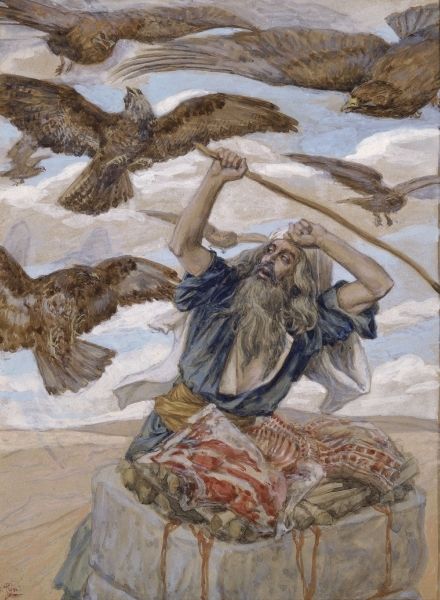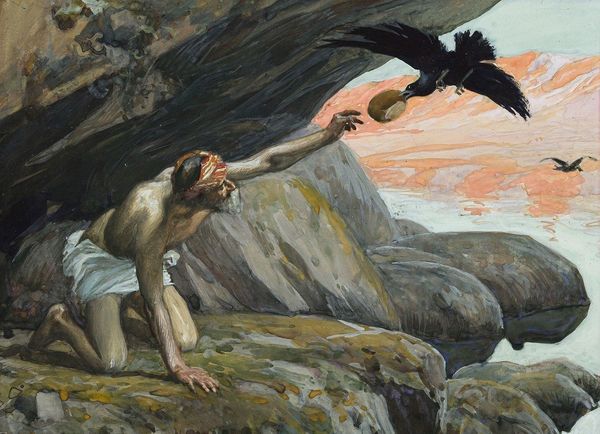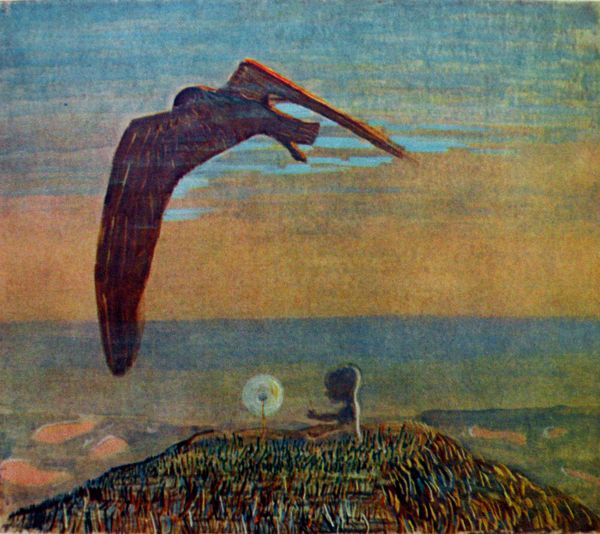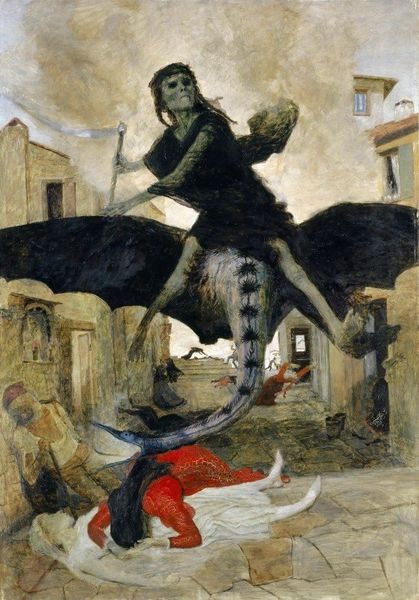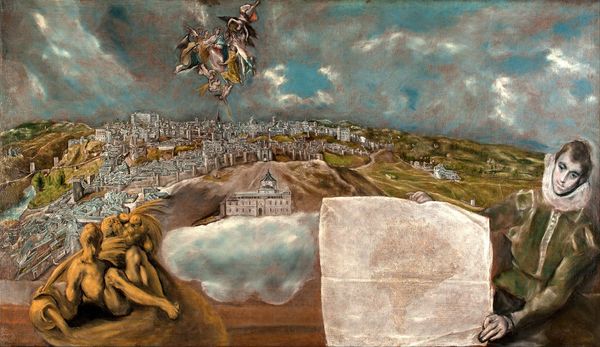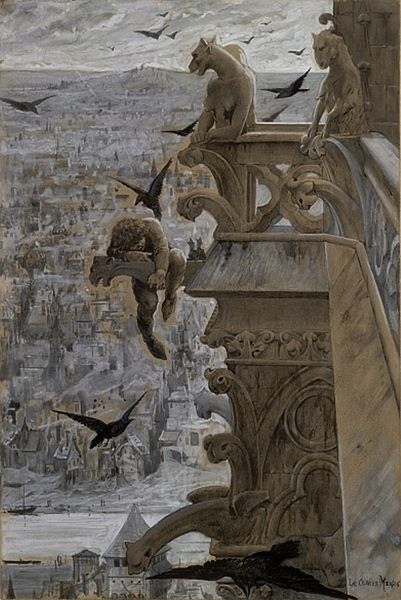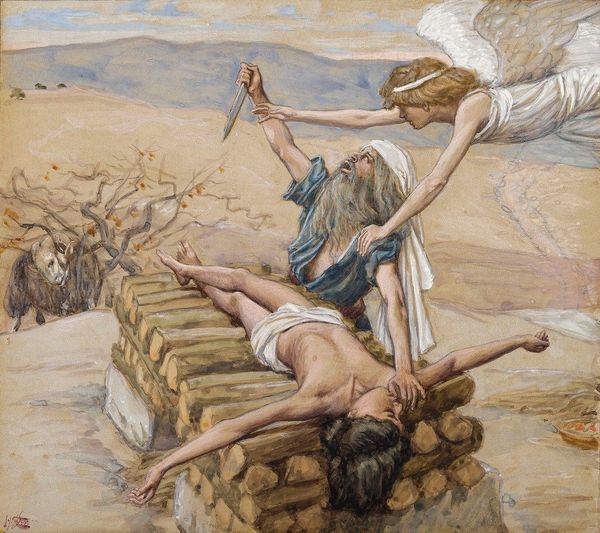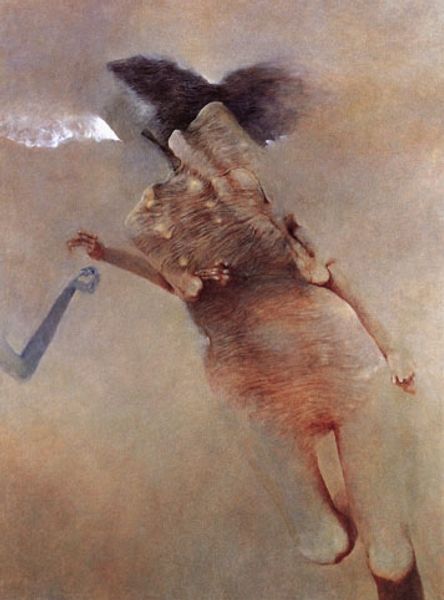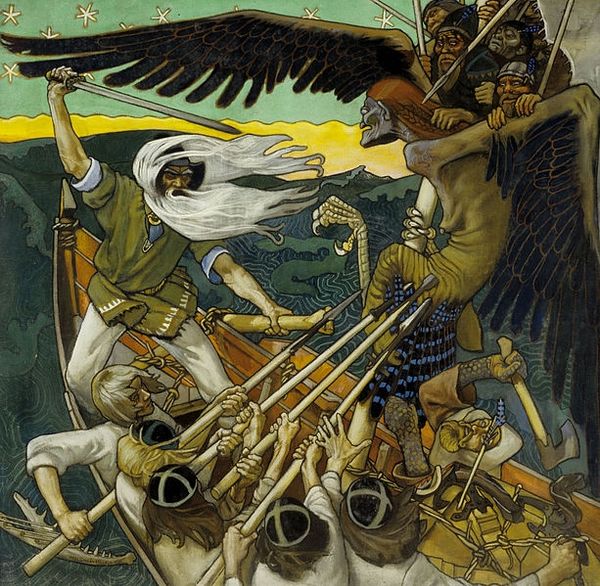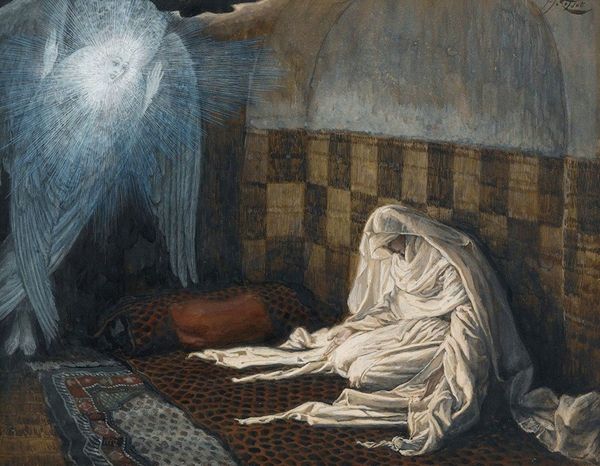
Copyright: Public Domain: Artvee
Curator: This is James Tissot’s, The Slaying of the Assyrians, executed circa 1896-1902. Editor: The composition strikes me immediately. This winged figure dominates the canvas, the aerial perspective adding to the feeling of dread hovering over the city. Curator: Indeed. Tissot has quite literally elevated his subject by focusing on its destructive materiality above an imagined built environment. Consider the availability of oil paint during this period and the complex layers of labor behind pigment production and artistic representation during late 19th century France, which are here consumed within this highly academic painting. Editor: Looking at the impasto and careful rendering of the angel’s anatomy, Tissot clearly engages with classical traditions. Notice how his manipulation of light and shadow emphasizes the figure’s muscularity, a testament to the Academic tradition’s idealization of the human form. The artist deftly deploys chiaroscuro. Curator: What is interesting is how the biblical subject is enmeshed within imperial narratives. This is not a medieval altarpiece. It is art consumed by a bourgeois society. Editor: The formal choices Tissot makes underscore that connection to narrative and Romanticism. His rendering of architectural details gives way to pure artistic license, underscoring the theatrical staging. It seems more about evoking feeling than presenting accurate archeological detail. Curator: Consider also the politics surrounding the consumption of artworks with biblical themes during a period of secularization and changing religious sensibilities. Who buys this? And why? Tissot clearly understood his buyers. Editor: A persuasive interpretation! Examining form and context allows us, in a way, to witness history interacting with artmaking. Curator: Agreed, that focusing on its production can uncover societal patterns and power dynamics reflected on canvas. Editor: Precisely. Seeing its composition with a keen eye and knowing more about the painting allows us a better appreciation of the artist's method and motivations.
Comments
No comments
Be the first to comment and join the conversation on the ultimate creative platform.
